Recently, the astronomical photonics team at the Nanjing Institute of Astronomical Optics and Technology, CAS conducted the first test observation using a VIPA spectrograph on the one-meter New Vacuum Solar Telescope (NVST) at the Yunnan Astronomical Observatory, achieving the expected observation results.
The VIPA spectrograph boasts a spectral resolution of approximately 500,000 (143m/s per pixel), with a wavelength coverage of 65 nm (592-657nm). It measures 532x200x180 mm3 and weighs 10kg. The spectrograph employs a multimode fiber input with the core diameter of 25mm, achieving an overall optical efficiency (from the fiber output end to the detector) of over 30%, with a VIPA transmission efficiency exceeding 85%.
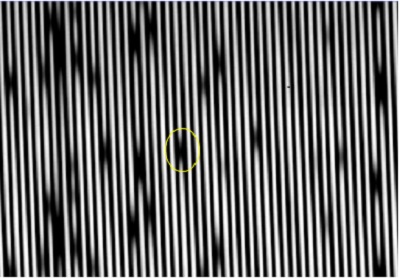
Fig. 1: Measured 2D spectral image (partial). The Fe I 6173 spectral line is shown in the yellow circle.
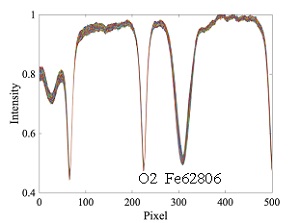
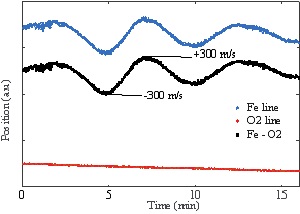
Fig. 2: 5-minute oscillation of the Sun observed by the spectrograph.
The coupling system of the VIPA spectrograph has an entrance pupil size of 3.6 mm, corresponding to a measured solar field of view of 16.5 arcseconds. Figure 2 displays the observed 5-minute oscillations in the solar central quiet region. During spectral processing, the Earth's oxygen absorption line was used as a reference for spectrograph drift, with Fe I 6280.6 as the target spectral line. The observed line center drift reached ±300 m/s from peak to trough.
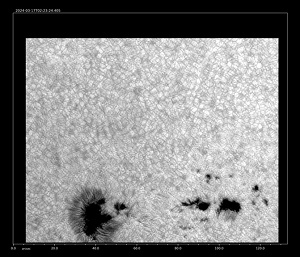
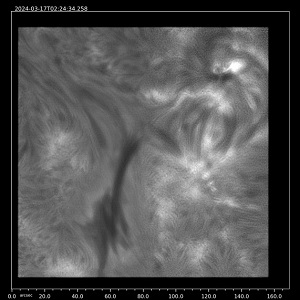
Fig. 3: Sunspots (left) and filaments (right) at the time of the actual measurement.
The VIPA spectrograph also conducted spectral tracking observations of a solar sunspot and nearby filaments on March 17, 2024 (Figure 3). The sunspot occupied approximately 16 arcseconds in the field of view. Figure 4 presents the linewidth of the Fe I 6173 in the solar central quiet region, sunspot, and filaments. It can be observed that compared to the central quiet region, both the sunspot and filaments exhibit significant broadening of spectral lines, with the filaments showing drastic broadening and variations at certain times.

Fig. 4: Linewidth of Fe I 6173 in different regions of the Sun.
Compared to current solar spectrographs based on grating dispersion with similar resolutions, this instrument boasts a wider single-shot spectral measurement range, enabling the simultaneous observation of over 650 solar characteristic spectral lines. Data analysis is still ongoing.
This observation was fully supported and assisted by the Fuxian Solar Observatory and Astronomical Technology Laboratory of the Yunnan Observatories. Professor Chen Pengfei from Nanjing University also participated deeply in the discussion and research of this work. Funding for this project was provided by the National Natural Science Foundation of China, the Chinese Academy of Sciences, the Jiangsu Provincial Science and Technology Department, and the Nanjing Institute of Astronomical Optics and Technology.